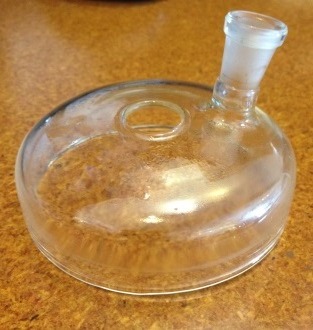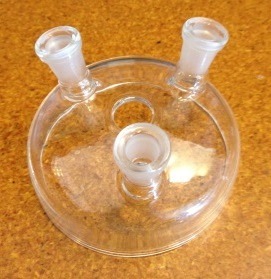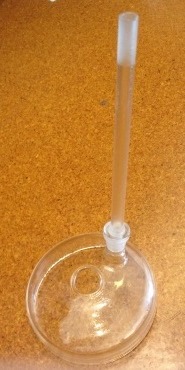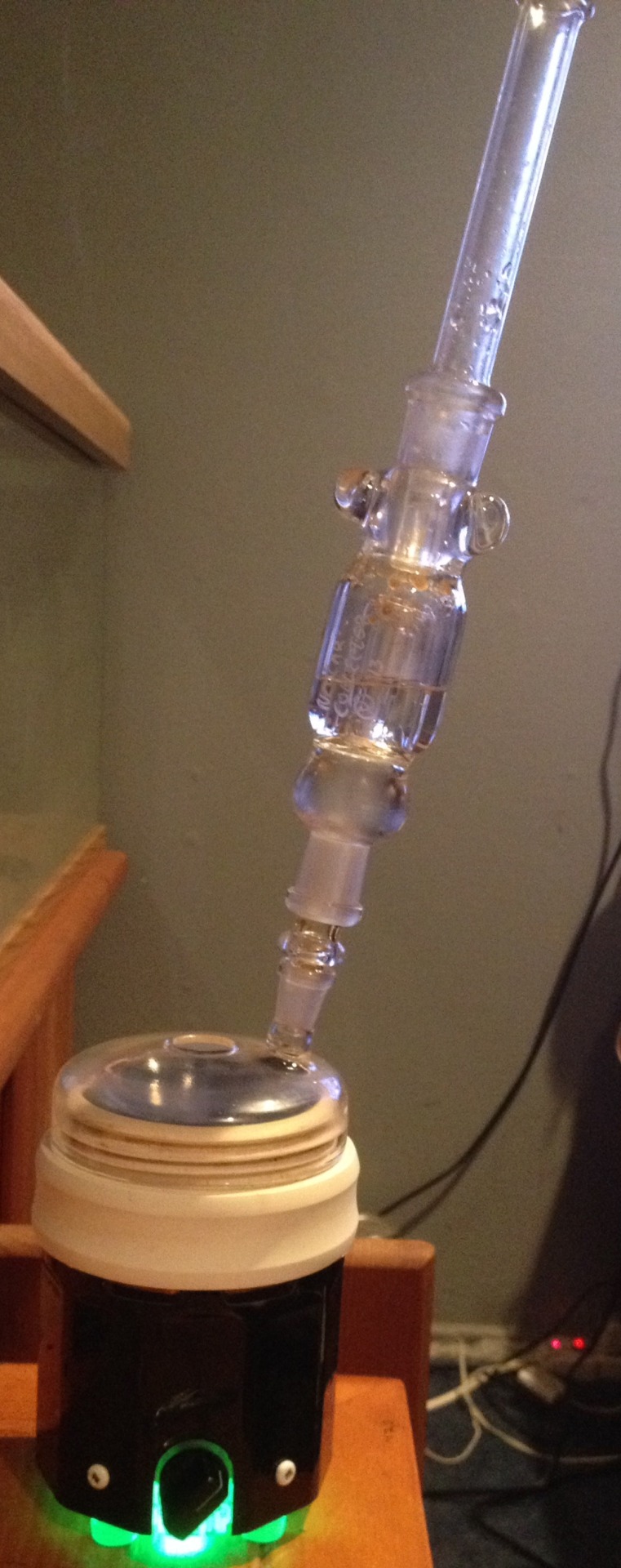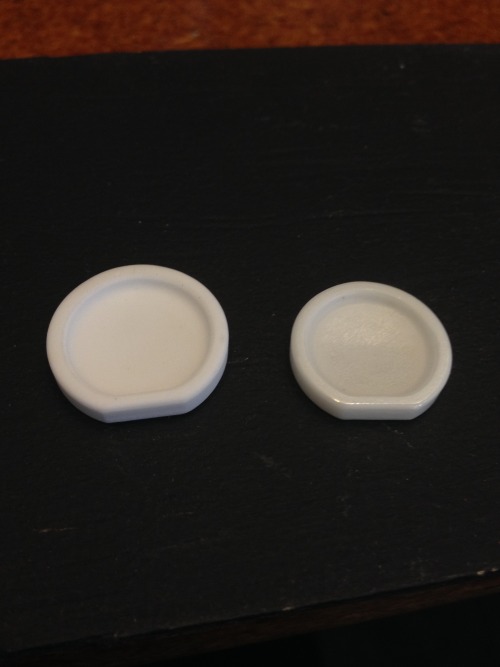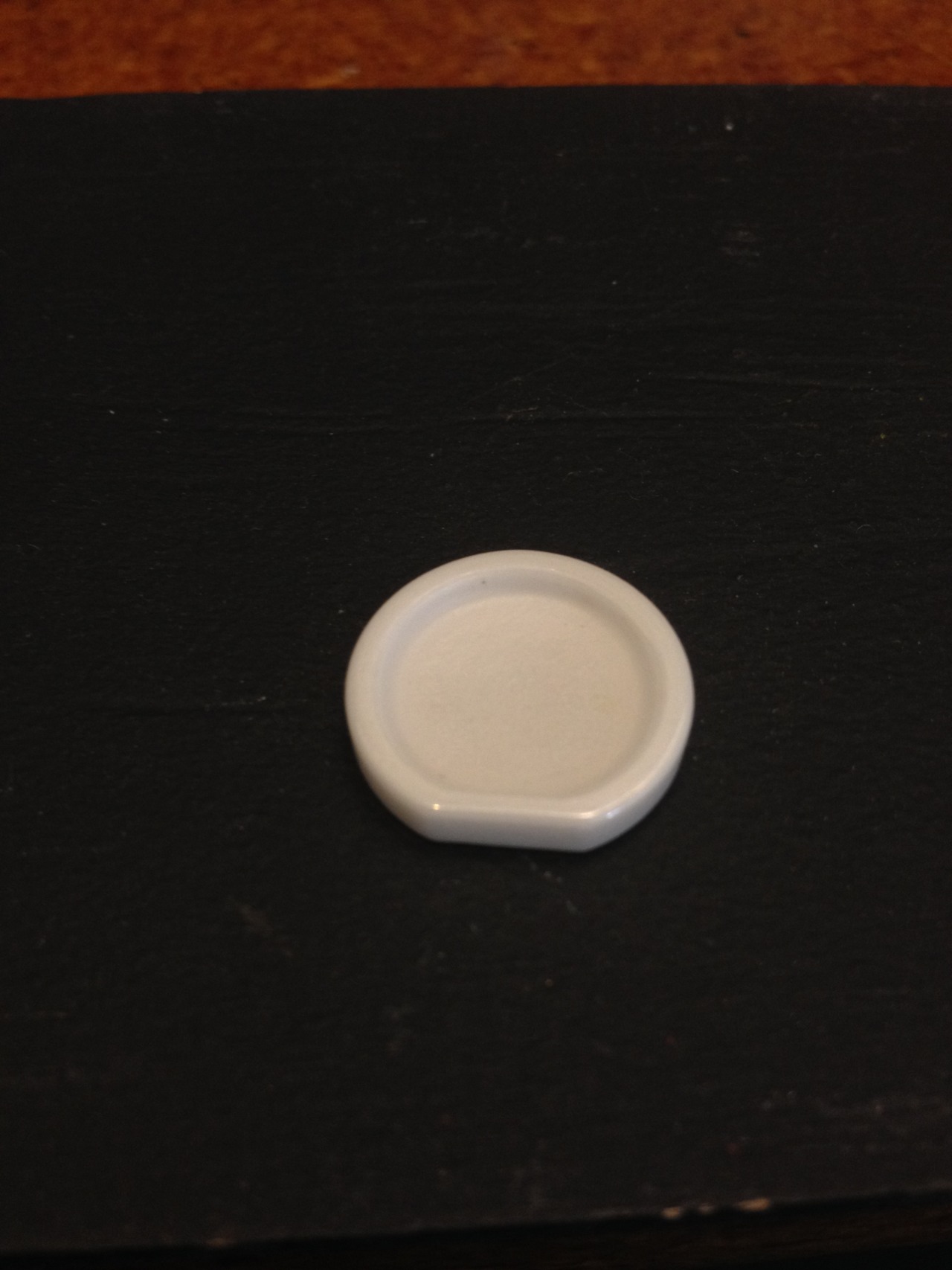The nature of using concentrates in a device like the VB2 (
cheese box darnit! 
)
is that one can get sidetracked from posting pertinent info.
What with no breakdowns, and with customer service at peak, there is nothing to dwell on other than the ozone!

Same with any Vaporbrothers product.
It is there and it works...
nothing to compare or say.
Also (C'mon.. admit it, waxheads... ) you can always just take care of it later... something always catches our interest on the way to write a great post!
I waited a respectable time so someone else could "take the floor".
I will begin discussion of inserts.
I wont make this a long drawn out story, but I will be adding images as other points come up.
Hint:
When working with discs.. a 40 watt bulb is your best friend. Not too bright or too dim.
Incadescent bulbs work best.
(
They are doing away with standard bulbs and using halogen and other new LED technology.. fuck the man!... so stock up!)
When using a set of discs of varying materials and evaluating which insert is best for which concentrate type, there are factors that you will want to consider.
Be fair, and allow inserts their chance to show their true colors unhampered by human error.
I do not like to leave my Nipple Top glass on for a couple of reasons. I remove the glass top when I step away from unit.
When unit is off , heat still rises, and the final heat will remain in the top.
- The tubing stays hot so it is prone to weaken its grip.. from not allowing it to cool.
- The residues that you may try to reclaim "toughen up" and become harder to work with, clean or dissolve after that final heating of a shut down unit.
There is a thought, however...
As the unit is now no longer heating and it begins to cool, I prefer NOT to expose my insert to the danger of rapid cooling, since this is the piece that takes the brunt of the daily beating.
One way to avoid damage to insert is to leave the cover on until unit is cool.
So what I do, is after a few hits..
I remove the top and set it aside to cool.
I set it down safe, but I do not like leaving my insert exposed during cooling
(note the top is behind unit)
I protect the open top with the less fragile, easier to slide on ceramic cover
(I can use the silicone nozzle, to suck up any last wisp that may occur)
Protecting the test materials
OK.. so now I have done my best job at protecting the insert from damage during testing so that I may see the materials true nature.
I have been through a number materials, but two are now in the hands of users, and those would be
what these images reflect.
I am not certain if the materials technical names matter or at this time are "non-disclosable".
I will disclose when I get word this is OK to print.
Later there may be other materials, and names to refer to each by.
For the purpose of the discussion about the 1st available 2 inserts,I will refer to them here as;
Original- Larger/duller in appearance/more traditional ceramic look. Dense yet lightweight.
New- Smaller/Shinier in appearance/ glazed porcelain look. Very Dense, Heavy feel.
Monitoring the materials
After complete cooling has been accomplished is when I lift out my insert to look it over.
I take note of the following details:
- black flecks that come off with a simple touch of a needle
- black flecks that come off, but when scraped with needle
- black flecks that don't respond to scratches (these will vanish with next heating)
- stains that appear to be duller than the rest of the insert
- stains that appear to be 'within"/penetrating insert...
- appearance of cracks
The cracking of these materials occurs in different ways.
It is tricky to monitor because the pieces don't just always fall apart.
This is because the external raised wall around the insert is a ring, providing structural integrity.
A crack occurs, but you do not see it, because the disc is hot and is also not in your hand. (
DONT try to lift and observe a cooling disc. This is a sure way to break one. They ain't cheap!)
By the time the insert has cooled down, the outer ring has contracted sufficient lt so that the cracks are invisible... pushed together through external force of the outer ring, now contracted.
Look at the discs back, against the light... using the discs backside as a mirror , trying to catch the light's reflection... and then look. for signs of cracking.
Enter the light bulb.
You will begin to see where you are having troubles.. and act accordingly.
Macor© that was tested once.. had to be machined by hand to have the outer ring.
it was outrageously expensive... and in the end not dense enough... it erupted as earth would over time into an uneven microscopic texture.
ORIGINAL INSERT
Original... well worn upon an unfocused glance.
cracking with some blistering
The back shows an obvious crack. I had been monitoring this particular crack.
It is older now and is beginning to have it's own indent or groove after it heals each time.
Now the darkened stain in the line also pulls your attention, as debris has finally entered, that has not bleached out through the purging of heat. The disc stays functional. (important)
The light test;
dim bulb with flash shows cracking and reflects glass dabber etchings on the surface.
brighter view... you can not see the dabber etchings without flash.
Blinding view... no flash used. MANY webbed cracks, but structural integrity
remains
This particular ORIGINAL insert had an ever so barely perceivable absorbent quality.
The dabs will dance on the hot surface, but when held in place, they melt in and vanish.
NOT considering sloppiness or overspill, a neatly placed and held dab will have a second of after-burn
The NEW insert did not have the same after-burn!
It's makeup is denser and very glossy.
Dabs do not appear to absorb into material in the least.
(not that the absorbency I mention is bad at all!)
After a great deal of use the new disc shows some dullness toward center.
Images next will show this disc.
It gives a preferred dab experience in my opinion.. but it is more sensitive due to it's increased density to cracking during cooling, and to forming microscopic fractures as the insert tries to cool and
readjust it's cracked sides together.
In other words, the preferred NEW disc can break more easily, but not unreasonably early in the inserts use.. and in my opinion it is worth replacing when needed.
I like it best, but would have no trouble going back to that ORIGINAL...or even the Experimental macor for that matter!
NEW INSERT:
At first glance, it looks in great shape, because of the lack of darkening
loser look tells it all. There is flaking in the center, bit not much...
but when this baby healed, the cracks went all the way up the lip. One can see that the lip.. the
ring I spoke of tries to hold up, but the fracture takes another direction.
The back reveals cracking, but not through and though. The density of this material forms a sheen, and rings as well that appear to have made the bottom "flat" of this insert it's structural force.
The shine against the light shows integrity along bottom plane
The light test reveals brutal cracks
The crack on the lip at about 10 on the dial will be this inserts failing within the next half dozen sessions. No tears shed... it served well!